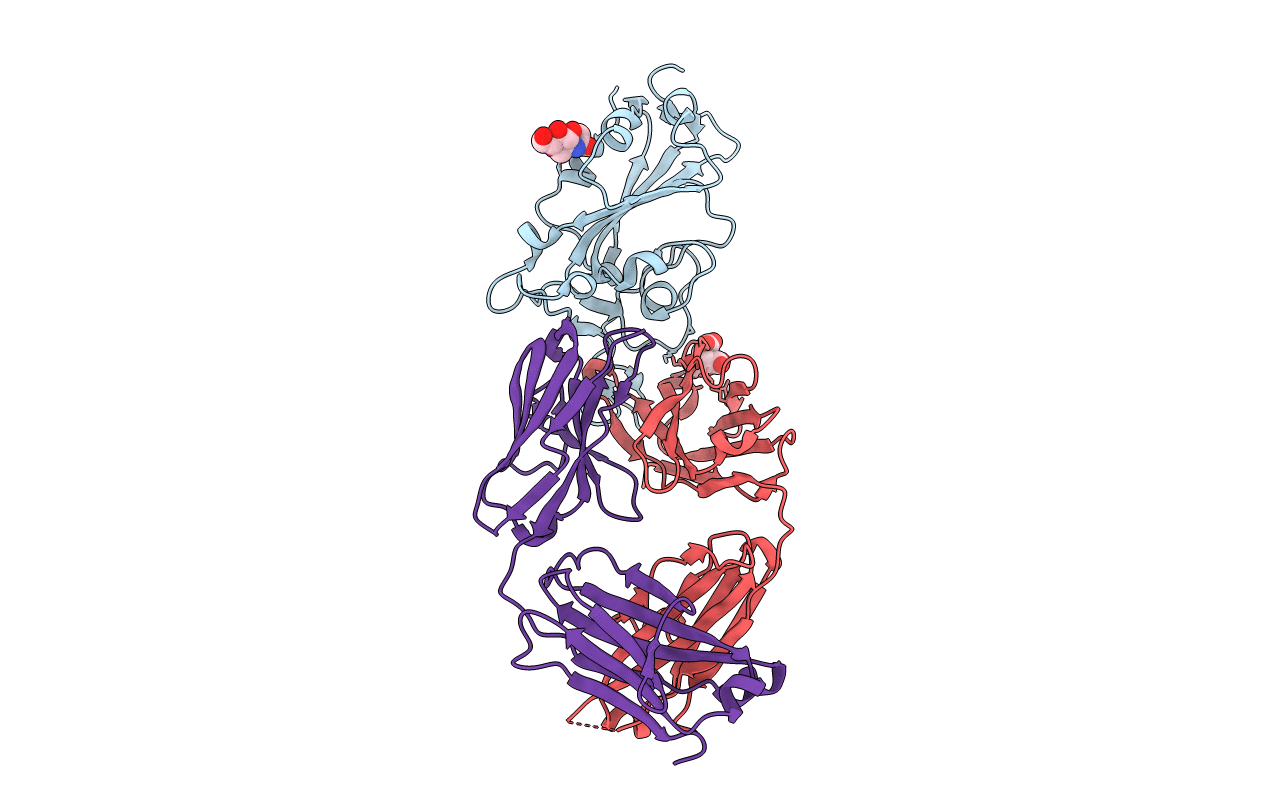
Deposition Date
2022-04-22
Release Date
2022-05-04
Last Version Date
2024-10-16
Entry Detail
PDB ID:
7URQ
Keywords:
Title:
Crystal Structure of SARS-CoV-2 S delta variant receptor-binding domain (RBD) in complex CoV11 Fab crystal form 1
Biological Source:
Source Organism:
Severe acute respiratory syndrome coronavirus 2 (Taxon ID: 2697049)
Homo sapiens (Taxon ID: 9606)
Homo sapiens (Taxon ID: 9606)
Host Organism:
Method Details:
Experimental Method:
Resolution:
2.05 Å
R-Value Free:
0.20
R-Value Work:
0.17
R-Value Observed:
0.17
Space Group:
P 21 2 21


